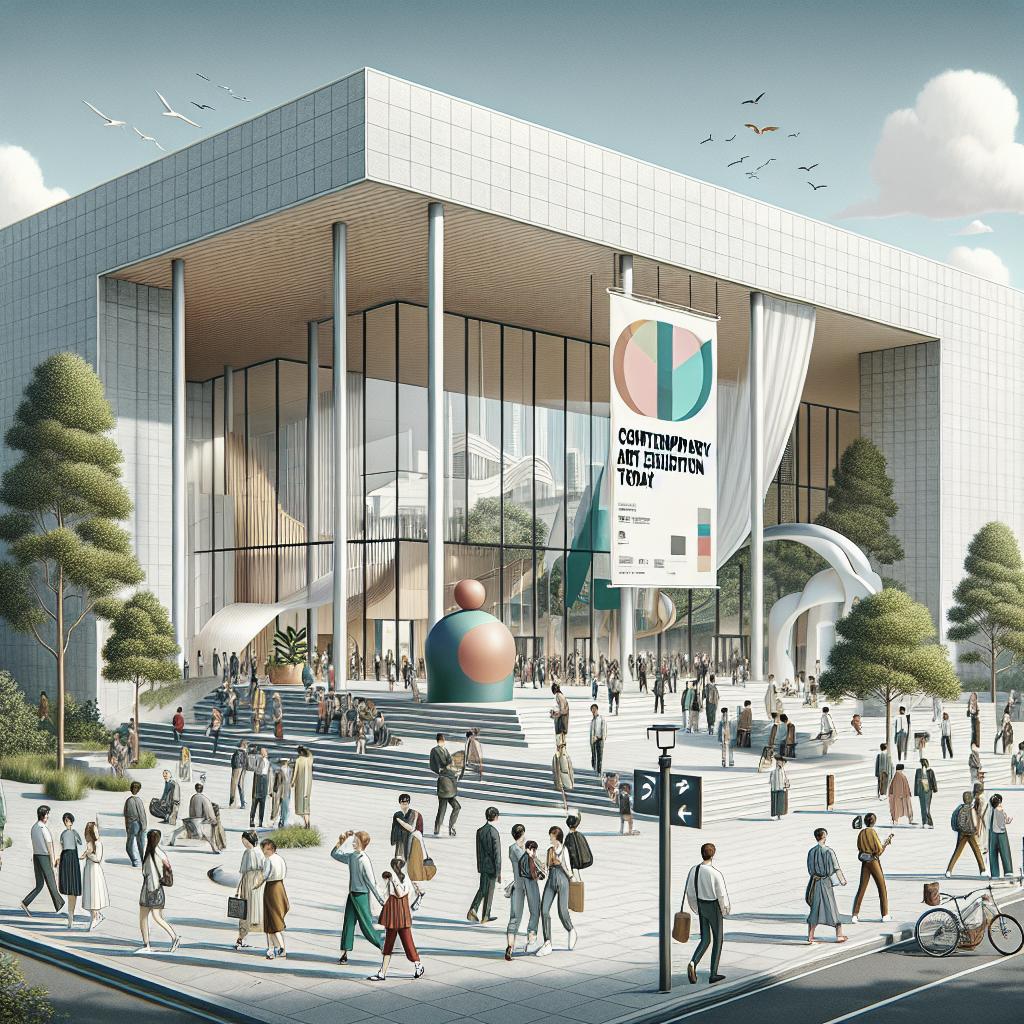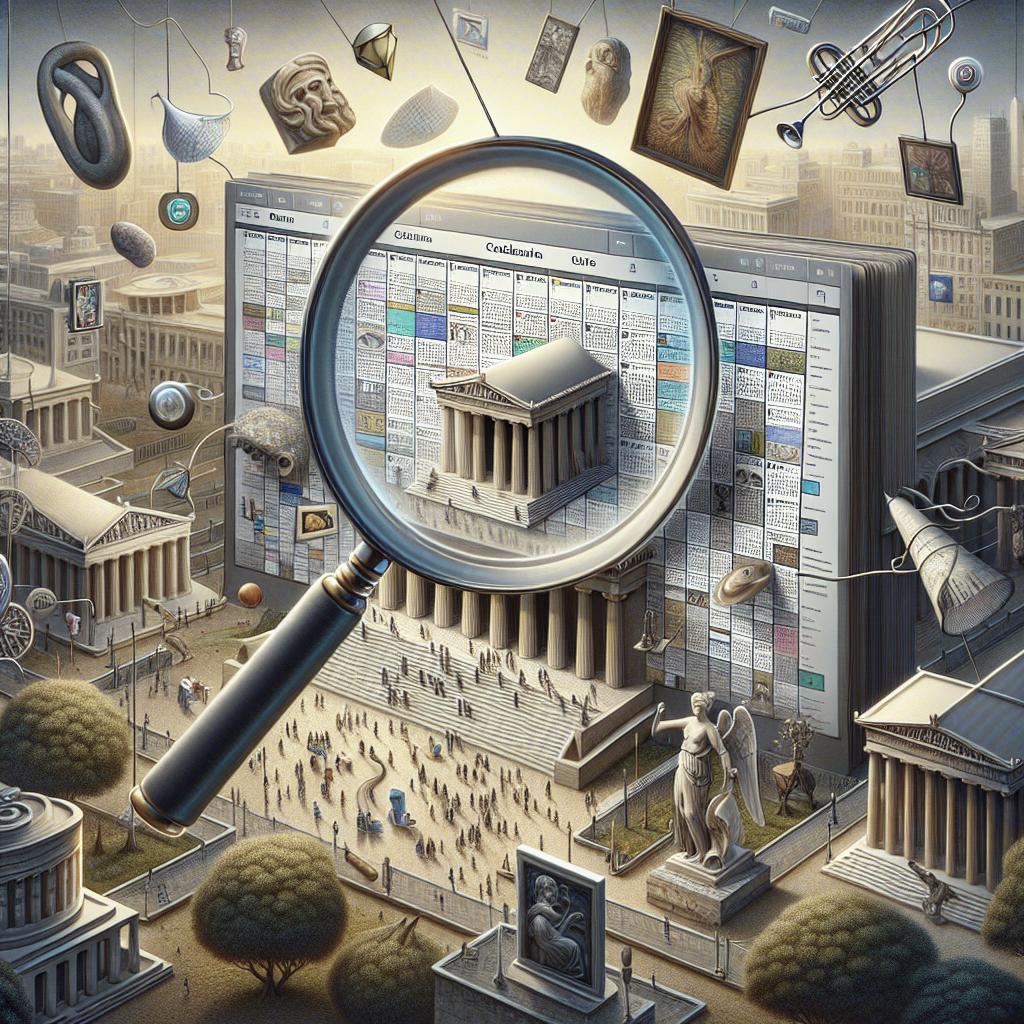As a burgeoning global citizen with a passion for art, you might often find yourself on the lookout for the best spots to experience avant-garde creativity. Contemporary art museums offer unrivaled opportunities to explore the latest artistic revolutions, techniques, and voices. From the classic elegance of Florence’s Uffizi Gallery to the cutting-edge installations at Tate Modern in London, these museums serve as vital cultural hubs around the world. This blog post offers you an inside look into some of the world’s best museums for contemporary art, spanning diverse cultural landscapes from America to Asia, illuminating each institution’s unique contributions to the world of contemporary art.
Scroll down to read about the best contemporary art museums in the world.
1. Uffizi Gallery, Florence
Located in Florence, Italy, the Uffizi Gallery has long been renowned for its exceptional collection of Renaissance masterpieces. However, it has recently adapted to the times by incorporating contemporary art exhibitions. These curated displays usually juxtapose modern works with classical pieces, creating a fascinating dialogue between different art eras. Additionally, Uffizi’s contemporary art initiatives include installations and temporary exhibitions featuring contemporary Italian and international artists. Visitors can enjoy an ever-evolving collection that keeps the museum both timeless and relevant, embodying the continuous evolution of Italian art from past to present.
Los Angeles County Museum of Art & Broad Contemporary Art Museum Los Angeles, USA
The Los Angeles County Museum of Art (LACMA) and the Broad Contemporary Art Museum, both in Los Angeles, offer an extraordinary experience for contemporary art lovers. LACMA is famous for its extensive permanent collection that includes works from the late 20th and early 21st centuries. The Broad Contemporary Art Museum, an independent museum founded by philanthropists Eli and Edythe Broad, concentrates solely on post-war and contemporary art. It hosts masterpieces by globally recognized artists like Jeff Koons and Yayoi Kusama, creating a dynamic environment where modern creativity thrives.
Whitney Museum of American Art, New York, USA
Located in Manhattan’s Meatpacking District, the Whitney Museum of American Art is renowned for its focus on 20th- and 21st-century American art. With a commitment to supporting and showcasing living artists, the Whitney provides a platform for innovative works that challenge conventions and reflect contemporary issues. The museum’s Whitney Biennial is a must-see event, offering a comprehensive snapshot of the evolving landscape of American art. This curated exhibition is a key barometer of contemporary trends and serves as an essential venue for emerging artists.
Guggenheim Museum Bilbao, Bilbao, Spain
Designed by the iconic architect Frank Gehry, the Guggenheim Museum Bilbao is a marvel of contemporary architecture and a cultural landmark in Spain. Since its opening in 1997, it has become a global symbol of modernity, characterized by its undulating titanium walls and innovative exhibitions. The museum’s focus is on post-war art, incorporating both renowned and emerging artists. With an eclectic mix of paintings, sculptures, and multimedia exhibits, this museum is a dynamic space that continually pushes the boundaries of contemporary art.
Museo d’Arte Contemporanea di Roma, Rome, Italy
Also known as MACRO, the Museum of Contemporary Art in Rome is a hub for the Italian and international contemporary art scene. Nestled in a converted brewery, the space itself exudes an industrial-chic vibe that compliments its avant-garde exhibitions. MACRO offers a range of cutting-edge installations, video art, and performance pieces that challenge traditional art norms. It serves as a platform for both emerging and established artists, making it an essential destination for those seeking to immerse themselves in the latest art trends.
Museum of Modern Art PS1, Queens, USA
Operating as an affiliate of the Museum of Modern Art, MoMA PS1 in Queens specializes in experimental and boundary-pushing art. Located in a former public school building, it offers a sprawling and unconventional venue for contemporary art displays. MoMA PS1 is renowned for its innovative exhibitions that often venture into immersive, experiential formats. Whether it’s through interactive installations or groundbreaking digital art, the museum plays a critical role in promoting avant-garde art movements.
Tate Modern, London, England
Situated on the banks of the River Thames, Tate Modern is London’s tribute to contemporary and modern art. Housed in a former power station, its industrial spaces have been transformed into galleries that exhibit some of the most significant works of the 20th and 21st centuries. Tate Modern’s vast collection includes iconic works from Pablo Picasso, Andy Warhol, and Ai Weiwei. Its numerous temporary exhibitions and large-scale installations continually attract global visitors, making it a central hub for exploring contemporary art in the UK.
Mori Art Museum, Tokyo, Japan
Perched atop the Mori Tower in Roppongi Hills, the Mori Art Museum offers both breathtaking views and an outstanding collection of contemporary art. The museum focuses on Asian and global artists, offering fresh perspectives on contemporary issues through its diverse exhibitions. The Mori Art Museum’s commitment to accessibility and education is evident in its extensive public programs and workshops. It serves as a crucial platform for dialogues about modern society through the lens of contemporary art.
Museum of Contemporary Art Shanghai (MoCA), Shanghai, China
Located in the heart of bustling Shanghai, MoCA is a beacon of contemporary creativity in China. The museum’s exhibitions often include multi-disciplinary works that explore complex themes such as globalization, identity, and technology. MoCA Shanghai is also renowned for its focus on fostering cultural exchange between Chinese and international artists. The museum’s vibrant events and art fairs make it a dynamic space for both showcasing and discovering contemporary art.
Hamburger Bahnhof, Berlin, Germany
Set in a historical train station, Hamburger Bahnhof is one of Berlin’s premier venues for contemporary art. The museum’s collection emphasizes post-1960s art, featuring influential artists like Joseph Beuys, Anselm Kiefer, and Andy Warhol. Hamburger Bahnhof continuously challenges visitors with its thought-provoking exhibitions that often include site-specific and large-scale installations. Its dynamic programming reflects Berlin’s influential role as a global contemporary art hub.
Related Articles:
More From Forbes
Explore more about travel, technology, and cultural highlights that can enrich your understanding of global innovation and creativity. Summary of main points:
| Museum | Location | Key Features |
|---|---|---|
| Uffizi Gallery | Florence, Italy | Renaissance masterpieces juxtaposed with contemporary art |
| Los Angeles County Museum of Art & Broad Contemporary Art Museum | Los Angeles, USA | Extensive permanent collection; Focus on post-war and contemporary art |
| Whitney Museum of American Art | New York, USA | Focus on 20th- and 21st-century American art; Whitney Biennial |
| Guggenheim Museum Bilbao | Bilbao, Spain | Iconic architecture; Post-war art exhibitions |
| Museo d’Arte Contemporanea di Roma | Rome, Italy | Cutting-edge installations; Industrial-chic space |
| Museum of Modern Art PS1 | Queens, USA | Experimental and boundary-pushing art; Immersive exhibitions |
| Tate Modern | London, England | Significant 20th and 21st-century works; Iconic riverside location |
| Mori Art Museum | Tokyo, Japan | Focus on Asian and global contemporary artists; Education programs |
| Museum of Contemporary Art Shanghai (MoCA) | Shanghai, China | Multi-disciplinary works; Cultural exchange focus |
| Hamburger Bahnhof | Berlin, Germany | Post-1960s art; Site-specific installations |


